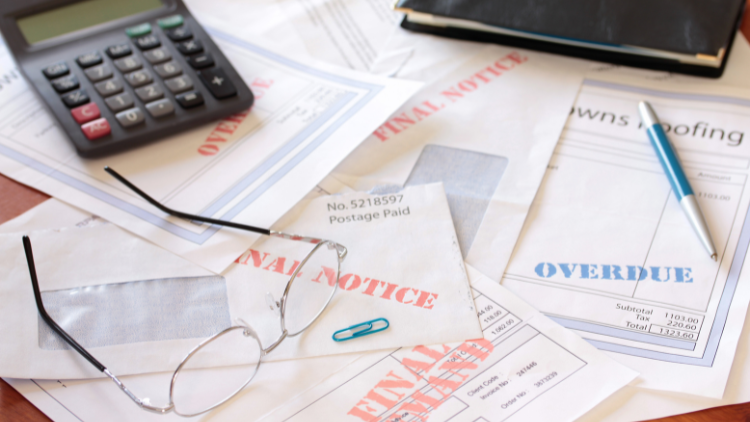A business credit card is one of the most powerful tools in an entrepreneur’s toolkit. It can help you manage your cash flow, streamline your expense tracking, earn valuable rewards on your spending, and build your business’s credit history.
But like any powerful tool, it can cause serious problems when used incorrectly.

Many new business owners, in the rush of launching and growing their company, fall into a few common traps.
These simple mistakes can lead to bookkeeping nightmares, missed savings, and even legal and financial risk.
This no-nonsense guide will walk you through the five biggest mistakes we see and give you a clear playbook to avoid them from day one.
Mistake #1: Mixing Personal and Business Expenses
Why It’s a Mistake: Commingling funds creates a massive headache at tax time, making it nearly impossible to accurately track deductible business expenses. According to the IRS, you must be able to prove your expenses are for business, and mixed statements make this difficult. For incorporated businesses (LLCs, S-Corps), it can also lead to a legal problem known as “piercing the corporate veil,” potentially putting your personal assets at risk in a lawsuit.
How to Avoid It: This is simple, but it requires discipline. Dedicate your business credit card for business expenses ONLY. Full stop. Use a separate personal credit card for all personal expenses. This clean separation is the primary reason to have a business card in the first place.
Mistake #2: Choosing the Wrong Rewards Strategy
Why It’s a Mistake: It’s easy to be drawn to a card with a huge points bonus or luxury travel perks, but the best card is the one that rewards your business’s actual spending. Choosing a card that doesn’t align with your spending habits means you’re leaving money on the table every single month. A premium travel card is wasted on a business that never travels, just as a card that rewards office supply purchases is useless for a freelance photographer.
How to Avoid It: Before you apply for any card, analyze your business’s budget. Identify your top 1-3 spending categories. Is it digital advertising, shipping, fuel, or software? Then, find a card that offers bonus rewards in those specific categories. If your spending is spread out and unpredictable, a simple flat-rate cash-back card is the smarter choice.
Mistake #3: Misunderstanding the Personal Guarantee
Why It’s a Mistake: Many new entrepreneurs believe that “business debt” is completely separate from their personal finances. For nearly all small businesses, this is a dangerous misconception.
When you apply for a small business credit card, you are almost always signing a personal guarantee. As the Small Business Administration (SBA) explains, this is a legal agreement that states if your business is unable to pay the debt, you are personally responsible for paying it back. The bank can come after your personal assets.
How to Avoid It: Always read the terms and conditions before you sign. Understand that you are personally liable for the debt you rack up. This reinforces the need to use the card responsibly and not treat it as free money for a struggling business.
Mistake #4: Carrying a High Balance
Why It’s a Mistake: Treating your business credit card like a long-term loan is one of the most expensive mistakes you can make. Business credit cards often come with high Annual Percentage Rates (APRs). Carrying a balance from month to month means you’ll pay crippling interest charges that directly eat into your hard-earned profits. Unlike personal cards, which are covered by the CARD Act of 2009, business cards have fewer protections, and issuers can sometimes raise your interest rate with less notice.

How to Avoid It: Treat your business card like a charge card or a 30-day, interest-free loan. Your goal should always be to pay the statement balance in full every single month. If you need to finance a large purchase, look for a card with a 0% introductory APR offer and create a strict plan to pay off the balance before that promotional period ends.
Mistake #5: Neglecting Employee Card Controls
Why It’s a Mistake: As your business grows, you may need to give cards to key employees. Simply handing over a card without setting up controls is a major risk. It opens your business to the risk of unauthorized spending, honest mistakes, or even outright fraud. Without clear limits and tracking, you are responsible for every single charge made on the account.
How to Avoid It: Take advantage of the management tools that all major business card issuers provide. When you issue an employee card, immediately log in to your account and set a specific spending limit on that card. Sign up for transaction alerts, and make a habit of reviewing your itemized statement each month.
A business credit card is a fantastic asset for a growing company. By treating it as the powerful financial tool it is and avoiding these common pitfalls, you can ensure it helps your business thrive.

Frequently Asked Questions (FAQ)
What’s “piercing the corporate veil”?
This is a legal term where a court can hold an owner personally liable for company debts if the business is not treated as a truly separate entity. Mixing personal and business finances is a key factor that can lead to this.
Do business credit cards affect my personal credit score?
The initial application for a business card will typically result in a hard inquiry on your personal credit report, which can cause a small, temporary dip in your score. However, most major issuers do not report the ongoing activity of the business card (like your balance or credit utilization) to your personal credit reports unless you default on the debt.
What if I’ve already made some of these mistakes?
Don’t panic. The best time to correct your course is right now. Start today by separating your expenses. Review your card’s rewards to see if they still make sense. Most importantly, create a plan to pay down any existing balance as quickly as possible. The key is to move forward with better habits.
WalletAware shares education, not individualized financial advice. Always confirm current terms on the issuer’s site before applying.